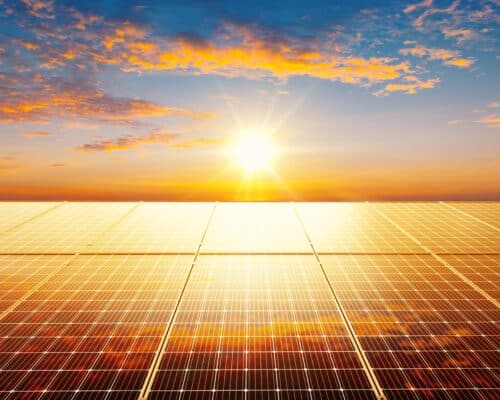Philippines’ Gas Development Plans Are Environmentally Destructive
junpinzon / Shutterstock.com
03 January 2023 – by Tim Daiss
The Philippines has been pegging much of its energy future on importing liquefied natural gas (LNG), instead of renewable energy. However, the dynamics that made the fuel a seemingly attractive option for the country just a few years ago have changed dramatically. Now, the fuel seems to be both economically and environmentally problematic.
Nonetheless, the country is still in the middle of an LNG infrastructure development push that could see it become dependent on imported fuel for several decades.
The Philippines has 36.5 million tonnes per annum (mtpa) of LNG import terminal capacity under development, along with 29.9 gigawatts (GW) of gas-fired power projects.
San Miguel Corporation
The major player in the Philippines’ LNG drive is the Manila-based conglomerate San Miguel Corp. (SMC). The organisation is also well-known for its beer. SMC Global Power Holdings Corp., SMC’s power arm, already operates a gas-fired power plant: the 1.2 GW Ilijan natural gas plant.
Furthermore, another plant is under construction, a 1.75 GW power plant scheduled to be commissioned at the end of this year in Verde Island Passage.
To make matters worse, SMC is proposing seven more gas-fired power plants for a combined capacity of 14.1 GW. This makes SMC the largest gas player in the region.
Proponents of LNG and gas-to-power development in the Philippines and Southeast Asia see the country’s pivot to gas as a major stride. However, that argument is fraught with problems that neither environmental facts nor energy economics support.
The Problem with Gas
Although less carbon-intensive than coal, gas, when used for power production, still emits around half the CO2 of coal. However, despite the drop in CO2, methane emissions exist throughout its life cycle. This is a problem that COP26 addressed in November 2021, resulting in the Global Methane Pledge.
The signatories were asked to take voluntary actions in a collective effort to reduce global methane emissions by at least 30% from 2020 levels by 2030. Methane, for its part, is more than 25 times as potent as carbon dioxide at trapping heat in the atmosphere.
In essence, by pushing ahead with its LNG infrastructure development and gas-to-power plans, the Philippines, despite not being a signatory to the pledge, will offset this historic achievement through its actions.
“With gas, we are driving down the same road to economic and climate disaster as we did with coal. We merely switched lanes,” says Gerry Arances, executive director of the Center for Energy, Ecology, and Development (CEED).
Energy Economics Favour Renewables
Building out more LNG import infrastructure and gas-to-power plants is not the environmental choice for the Philippines’ energy sector. Pricing dynamics for LNG also cause any further argument in favour of gas to fall to the wayside.
Earlier this year, spot prices for LNG in the Asia-Pacific region breached the cost-prohibitive USD 100/MMBtu price point. Prices quickly pared gains. However, these were not enough to justify a continued LNG and gas pivot for countries in the region.
LNG prices are currently trading in the low to mid-USD 30 price point. The price is still high enough to cause an unfortunate pivot to cheaper coal. However, it should, more specifically, provide the impetus to turn more heads towards renewables development instead.
Even SMC Global Power recently admitted that it needed help recovering losses after a fossil fuel price hike. It said in August that its power plants had suffered combined losses of P15 billion (USD 272 million). This prompted the company to seek temporary relief from the energy regulator to allow it to continue supplying power.
Gas Prices in the Philippines will Remain High
LNG and gas prices are forecast to remain high for at least the near future. Meanwhile, the ongoing gas supply crunch, caused largely by Russia’s invasion of Ukraine in February and subsequent pipeline gas disruptions, will also persist for several more years.
Sourcing LNG will likely become even more unpredictable. Meanwhile, most of the Philippines’ LNG import projects have yet to ink much-needed long-term offtake agreements for a steadier supply of the fuel. As such, it will be vulnerable to supply disruptions, price hikes and fluctuations of spot market procurement for the fuel.
According to the Institute for Energy Economics and Financial Analysis (IEEFA), LNG sourcing is unstable and unpredictable. This has led to difficulties in securing imported LNG and can serve as a warning for Philippine energy companies.
Moreover, when the global gas market supply and demand fundamentals reach equilibrium, more wind and power project development could take place in the Philippines.
Wind projects can be built in as little as two to six months. Solar projects can be built and become operational in around six to 18 months, depending on size and scale. LNG import terminals can take three to five years to build in developed countries and longer in those with little or no LNG development experience.
LNG and gas-to-power development will see the Philippines rely on imported fuel instead of striving for more energy independence. Renewable energy development is also proving cheaper than its gas and LNG counterparts. This adds yet another reason for a pivot to renewables instead of gas.
by Tim Daiss
Tim has been working in energy markets in the Asia-Pacific region for more than ten years. He was trained as an LNG and oil markets analyst and writer then switched to working in sustainable energy, including solar and wind power project financing and due diligence. He’s performed regulatory, geopolitical and market due diligence for energy projects in Vietnam, Thailand and Indonesia. He’s also worked as a consultant/advisor for US, UK and Singapore-based energy consultancies including Wood Mackenzie, Enerdata, S&P Global, KBR, Critical Resource, and others. He is the Chief Marketing Officer (CMO) for US-based lithium-sulfur EV battery start-up Bemp Research Corp.
Read more




